This text enunciates and illustrates features and basic
principles of C++. It is aimed at experienced C users who
wish to learn C++. It can also be interesting for beginner
C++ users who leaved out some possibilities of the
language.
 |
|
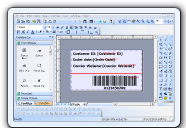 |
New
Promotional personalized database document
printing Solution
--Variable
Data Printing |
|
A.NET/ VC++ Source Code Component for building any database printing applications that create dynamic, database-driven documents quickly and easily and personalize your promotional communications by varying text, graphics, barcodes, or entire layouts based on information found in your database,
more.. |
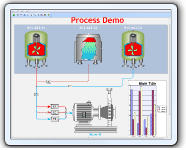 |
August 15, 2008
UCanCode Dynamic Graphics
and Real-Time Process
Simulator Solution |
|
UCanCode Software Inc. is a leading provider of
HMI & SCADA,
CAD,
UML,
GIS and Data Visualization Graphics
for software developers more than 40 countries around the world!,
more... |
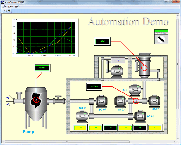 |
Building
your own SCADA Software --
-- Full VC++ Source Codes |
|
Add Diagrams and
SCADA to your applications. E-XD++ Diagrammer brings accurate and
intuitive diagrams and dashboards to your c++ desktop applications. It
offers a comprehensive set of tools, components and graphic objects for
creating visualization, editing and monitoring Windows applications,
more...
|
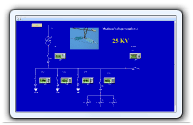 |
HMI
and
Graphics Software ToolKit Solution -- Full VC++ Source Codes |
|
UCanCode E-XD++ Visualization ToolKit
is an extremely flexible and robust graphical framework for building visual
interfaces that display real-time data, from Process Control operator
displays and HMI screens to Traffic and Telemetry Monitoring displays and
Supply Chain visualizations. more...
|
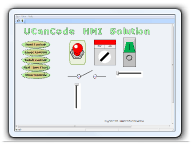 |
New
Real-time data display
Software Component Solution -- Full VC++ Source Codes |
|
UCanCode is the leader of Real Time Graphics Source Code Toolkit, Data Visualization, HMI, UML, CAD, GIS and FlowChart for software developers around the world. Its products are
used to visualize and control real-time and mission-critical
processes in a variety of industries,
more... |
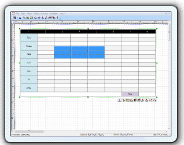 |
September 25, 2008
True
Microsoft word like table Component Control Solution
-- Full VC++ Source Codes |
|
Here
you can find a full
Microsoft Word Like Table Component,
this also the first full MS-Word
like
table
component
that designed for
drawing
and
printing
around the world, full VC++source code
shipped. Add table editing, drawing, printing
capability to your word process applications within a few minutes,
more...
|
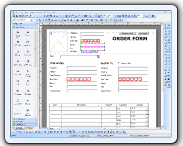 |
UCanCode
Electronic form solution V12.0
from ucancode |
|
UCanCode software is the
only software company to ship
high quality E-Form Component Source Code in the world. With full edition of E-XD++ Suite, you
have the 100% VC++ / .NET Source Codes
of E-Form Designer and the 100% VC++
/ .NET Source Codes of E-Form Reader,
you also have the license to modify any party of these source
codes to build your own E-Form
Applications, it will save tons of month development time (Save Over 90%
time to building E-Form based application),
more...
|
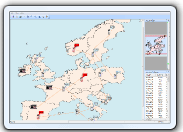 |
July 24, 2008
Telecom Datacom map
process flow Solution
from ucancode |
|
The UCanCode E-XD++
Component Enterprise Edition product family provides a complete set
of display components for user interface developers building
telecom or datacom applications.Cut development time by 50%
while delivering industry-standard look-and-feel that helps operators make
rapid, accurate decisions., more... |
 |
September 07, 2008
UCanCode SVG Import and Graphics Edit Print Render
Solution |
|
UCanCode E-XD++
Component graphicsd diagram solution is a Source Code based framework for advanced vector
graphics editor, with capabilities similar to Illustrator,
CorelDraw, or Xara X, supporting import the W3C standard Scalable
Vector Graphics (SVG) file format. The full VC++ Source Codes of
SVG
import feature will be shipped.,
more... |
 |
July 30, 2008
UCanCode Diagram Editor
from ucancode |
|
UCanCode E-XD++
Diagrammer offers a powerful set of tool to help developers quickly and
efficiently create diagrams and process flow. It provides a very
professional diagram editor to automate application production
without coding. This diagram editor tools address the different aspects of
producing appropriate content-based diagram and flowchart displays,
more... |
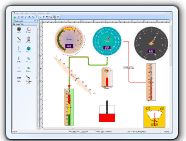 |
June 04, 2008
Real-time gauge dashboard
diagram solution
from ucancode
|
|
Monitor your critical real-time data using
gauge and digital panel representations. UCanCode
Gauges is a set of VC++ Soure Code Library that
allow developers to quickly and effectively integrate
gauges into their desktop and web-based applications.
UCanCode Gauges includes full C++ source codes
based Radial gauge, Linear gauge,
Digital Meter and Marquee Panel components optimized
for real-time with realistic look and
adaptive styles for your environment,
more...
|
 |
|
|
The UCanCode E-XD++
Component Enterprise Edition product family enables you to develop
Gis / Map based visualization applications quickly and efficiently.
Map Displays with Custom Objects for .net and C++
Developers E-XD++ provides a complete mapping drawing, display,
printing, software development kit (SDK) for
creating any .net or C++ displays applications quickly and
easily,
more...
|
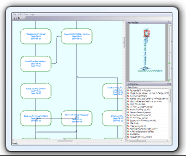 |
UCanCode Graph
Display, drawing, Layout solution from ucancode |
|
The E-XD++
Component Enterprise Edition product family enables you to develop
graph visualization applications quickly and efficiently. With
this component, you can easily enhance your applications with advance graph display, viewing and editing,
xml loading, graph printing
technologies support. You can customize both the display and the interactive
behaviors of your application using ucancode leading industry standard components
,
more...
|
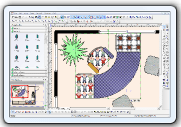 |
UCanCode Home & Office
Plan Drawing and Design solution from ucancode |
|
Each time when you want to
create your own building design and office plan
software, you should consider to use E-XD++
Diagram Component, it is the best component with
almost all the features of Microsoft Visio 2007 and
SmartDraw. It will save you many months for building any
kind of office plan, home building design
and drawing software,
more...
|
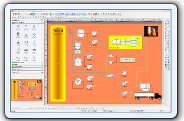 |
HMI
and SCADA Process Flow
Diagram Component Solution
from ucancode
|
Monitoring GUIs for C++, VB, Java, and the
.NET platform
UCanCode XD++ provides a complete set of
services, consisting of design tools and a software development kit (SDK),
for developers who want to create a user interface for industrial
monitoring applications. These displays feature highly customized
graphical objects that connect to underlying real-world data,
more...
|
 |
Circult diagram drawing Component Source
Code Solution from ucancode
|
|
E-XD++ Library is a powerful
diagram drawing component for creating professional-looking
business, technical drawings and illustrations for your documents
quickly and easily. E-XD++ Library is the ideal component for
creating any kind of Electric power diagram drawing application or
circult drawing application,
more... |
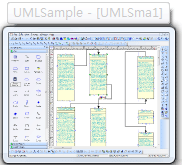 |
UML
Diagram Component / Drawing C++ Source Code
Solution from ucancode
|
|
|
E-XD++
Enterprise Edition Suite is a 100% C++ based
diagram Component, it's UML Diagram
Solution contains almost all the features of
building a high-quality UML Application, as
a UML modeling tool component, it
helps you to quickly and easily build any
kind of applications that has all varieties
of UML diagrams. Developers save 50
to 80 percent of development time when
creating displays with ucancode
Visualization,
more... |
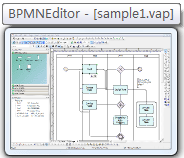 |
BPMN
Diagram Component / Drawing Source Code
Solution from ucancode |
|
Business Process Modeling Notation
(BPMN) is the standard for modeling
business processes and web service
processes. BPMN is a core enabler of
Business Process Management (BPM), a
new initiative in enterprise architecture.
UCanCode Software provides rich and core
components for Business Process Modeling
Notation (BPMN). It includes
workflows diagram
designer,
E-Form Designer,
and
BPMN Diagram Designer, more... |
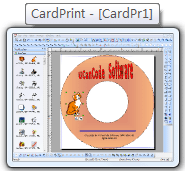 |
Label Print and Report
Print Component Source Code
from ucancode |
|
With E-XD++
Component, you can add advanced printing
functionality to your applications. The
E-XD++ Library is a 100% C++ data rendering
and visualization system, built specifically
for Visual Studio .NET and designed to bring
your User Interface to the printed page. Now
you only need a few days for building a very
powerful label print or report print
application,
more... |
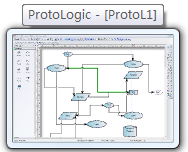 |
Proto - Logic Diagram
Component Source Code from
ucancode |
|
Add proto -
logic diagram displays to your
Java, C++, and .NET applications, for the desktop and rich
internet applications.
More... |
 |
 2008,
E-XD++
Flow Diagram Kit Enterprise Edition 2008
Volume 1 Released,
this is a
maintenance release that includes improved
drawing performance, tons of new features, new
samples, bug fixes and more. See the full list
of changes
here.
2008,
E-XD++
Flow Diagram Kit Enterprise Edition 2008
Volume 1 Released,
this is a
maintenance release that includes improved
drawing performance, tons of new features, new
samples, bug fixes and more. See the full list
of changes
here. |
|
1.
There is a new way to #include
libraries (the old method still works yet the compiler
roars). The .h extension is no more written and the
names of standard C libraries are written beginning with a
c. In order for the program to use these libraries
correctly using namespace std; has to be added:
using namespace std;
#include <iostream> // This is a key C++ library
#include <cmath> // The standard C library math.h
int main ()
{
double a;
a = 1.2;
a = sin (a);
cout << a << endl;
return 0;
}
A few hints for beginners:
To compile this program, type it inside (or copy &
paste it to) a text editor (gedit, kwrite, kate, kedit,
vi, emacs, nano, pico, mcedit, Notepad...), save it
as a file named say test01.cpp
(if you are a newbie, best put this file inside your home
directory, that is say /home/jones
on a Unix-like box).
To compile this source code file, type this command (on
most open-source Unix-like boxes) in a console or terminal
window:
g++ test01.cpp -o
test01
To run the binary executable file test01
that has been produced by the compilation (if there were
no errors), type this:
./test01
Each time you modify the test01.cpp
source code file, you need to compile it again if you want
the modifications to echo in the test01
executable file (type the upward arrow key on your
keyboard to recall commands).
2.
You can use //
to type a remark:
using namespace std; // Using the standard library namespace.
#include <iostream> // The iostream library is often used.
int main () // The program's main routine.
{
double a; // Declaration of variable a.
a = 456.47;
a = a + a * 21.5 / 100; // A calculation.
cout << a << endl; // Display the content of a.
return 0; // Program end.
}
(The possibility to use //
to type remarks has been added to C in C99 and ANSI C
2000.)
3.
Input from keyboard and output to screen can be performed
through cout << and cin >>:
using namespace std;
#include <iostream>
void main()
{
int a; // a is an integer variable
char s [100]; // s points to a string of max 99 characters
cout << "This is a sample program." << endl;
cout << endl; // Just a line feed (end of line)
cout << "Type your age : ";
cin >> a;
cout << "Type your name: ";
cin >> s;
cout << endl;
cout << "Hello " << s << " you're " << a << " old." << endl;
cout << endl << endl << "Bye!" << endl;
return 0;
}
4.
Variables can be declared everywhere inside the code
without using hooks:
using namespace std;
#include <iostream>
int main ()
{
double a;
cout << "Hello, this is a test program." << endl;
cout << "Type parameter a: ";
cin >> a;
a = (a + 1) / 2;
double c;
c = a * 5 + 1;
cout << "c contains : " << c << endl;
int i, j;
i = 0;
j = i + 1;
cout << "j contains : " << j << endl;
return 0;
}
Maybe try to use this feature to make your source codes
more readable and not to mess them up.
Like in C, variables can be encapsulated between { }
hooks. Then they are local to the zone encapsulated
between the { and }. Whatever happens with such variables
inside the encapsulated zone will have no effect outside
the zone:
using namespace std;
#include <iostream>
int main ()
{
double a;
cout << "Type a number: ";
cin >> a;
{
int a = 1;
a = a * 10 + 4;
cout << "Local number: " << a << endl;
}
cout << "You typed: " << a << endl;
return 0;
}
5.
A variable can be initialised by a calculation involving
other variables:
using namespace std;
#include <iostream>
int main ()
{
double a = 12 * 3.25;
double b = a + 1.112;
cout << "a contains: " << a << endl;
cout << "b contains: " << b << endl;
a = a * 2 + b;
double c = a + b * a;
cout << "c contains: " << c << endl;
return 0;
}
6.
C++ allows to declare a variable to be local to a loop:
using namespace std;
#include <iostream>
int main ()
{
int i; // Simple declaration of i
i = 487;
for (int i = 0; i < 4; i++) // Local declaration of i
{
cout << i << endl; // This outputs 0, 1, 2 and 3
}
cout << i << endl; // This outputs 487
return 0;
}
In case the variable is not declared somewhere above
the loop, you may be tempted to use it below the loop.
Some early C++ compilers accept this. Then the variable
has the value it had when the loop ended. You shouldn't do
this. It's a bad practice:
using namespace std;
#include <iostream>
int main ()
{
for (int i = 0; i < 4; i++)
{
cout << i << endl;
}
cout << i << endl; // Bad practice!
i += 5; // Bad practice!
cout << i << endl; // Bad practice!
return 0;
}
7.
A global variable can be accessed even if another variable
with the same name has been declared inside the function:
using namespace std;
#include <iostream>
double a = 128;
int main ()
{
double a = 256;
cout << "Local a: " << a << endl;
cout << "Global a: " << ::a << endl;
return 0;
}
8.
It is possible to make one variable be another:
using namespace std;
#include <iostream>
int main ()
{
double a = 3.1415927;
double &b = a; // b is a
b = 89;
cout << "a contains: " << a << endl; // Displays 89.
return 0;
}
(If you are used at pointers and absolutely want to
know what happens, simply think double &b = a
is translated to double *b = &a
and all subsequent b are replaced by *b.)
The value of REFERENCE b cannot be changed after
its declaration. For example you cannot write, a few lines
further, &b = c expecting now b
is c. It won't work. Everything is said on the
declaration line of b. Reference b and
variable a are married on that line and nothing
will separate them.
References can be used to allow a function to modify a
calling variable:
using namespace std;
#include <iostream>
void change (double &r, double s)
{
r = 100;
s = 200;
}
int main ()
{
double k, m;
k = 3;
m = 4;
change (k, m);
cout << k << ", " << m << endl; // Displays 100, 4.
return 0;
}
If you are used at pointers in C and wonder how
exactly the program above works, here is how the C++
compiler would translate it to C:
using namespace std;
#include <iostream>
void change (double *r, double s)
{
*r = 100;
s = 200;
}
int main ()
{
double k, m;
k = 3;
m = 4;
change (&k, m);
cout << k << ", " << m << endl; // Displays 100, 4.
return 0;
}
A reference can be used to let a function return a
variable:
using namespace std;
#include <iostream>
double &biggest (double &r, double &s)
{
if (r > s) return r;
else return s;
}
int main ()
{
double k = 3;
double m = 7;
cout << "k: " << k << endl; // Displays 3
cout << "m: " << m << endl; // Displays 7
cout << endl;
biggest (k, m) = 10;
cout << "k: " << k << endl; // Displays 3
cout << "m: " << m << endl; // Displays 10
cout << endl;
biggest (k, m) ++;
cout << "k: " << k << endl; // Displays 3
cout << "m: " << m << endl; // Displays 11
cout << endl;
return 0;
}
Again, provided you're used at pointer arithmetics and
if you wonder how the program above works, just think the
compiler translated it into the following standard C
program:
using namespace std;
#include <iostream>
double *biggest (double *r, double *r)
{
if (*r > *s) return r;
else return s;
}
int main ()
{
double k = 3;
double m = 7;
cout << "k: " << k << endl;
cout << "m: " << m << endl;
cout << endl;
(*(biggest (&k, &m))) = 10;
cout << "k: " << k << endl;
cout << "m: " << m << endl;
cout << endl;
(*(biggest (&k, &m))) ++;
cout << "k: " << k << endl;
cout << "m: " << m << endl;
cout << endl;
return 0;
}
To end with, for people who have to deal with pointers
yet do not like it, references are useful to un-pointer
variables. Beware this is considered a bad practice. You
can go into trouble. See for example http://www.embedded.com/story/OEG20010311S0024.
using namespace std;
#include <iostream>
double *silly_function () // This function returns a pointer to a double
{
static double r = 342;
return &r;
}
int main ()
{
double *a;
a = silly_function();
double &b = *a; // Now b is the double towards which a points!
b += 1; // Great!
b = b * b; // No need to write *a everywhere!
b += 4;
cout << "Content of *a, b and r: " << b << endl;
return 0;
}
9.
Namespaces can be declared. The variables declared within
a namespace can be used thanks to the :: operator:
using namespace std;
#include <iostream>
#include <cmath>
namespace first
{
int a;
int b;
}
namespace second
{
double a;
double b;
}
int main ()
{
first::a = 2;
first::b = 5;
second::a = 6.453;
second::b = 4.1e4;
cout << first::a + second::a << endl;
cout << first::b + second::b << endl;
return 0;
}
 CAM simulator
Sample with
VC++ MFC Source Code CAM simulator
Sample with
VC++ MFC Source Code
10.
If they contain just simple lines of code, use no for
loops or the like, C++ functions can be declared inline.
This means their code will be inserted right everywhere
the function is used. That's somehow like a macro. Main
advantage is the program will be faster. A little drawback
is it will be bigger, because the full code of the
function was inserted everywhere it is used:
using namespace std;
#include <iostream>
#include <cmath>
inline double hypothenuse (double a, double b)
{
return sqrt (a * a + b * b);
}
int main ()
{
double k = 6, m = 9;
// Next two lines produce exactly the same code:
cout << hypothenuse (k, m) << endl;
cout << sqrt (k * k + m * m) << endl;
return 0;
}
(The possibility to use inline functions has been
added to C in C99 and ANSI C 2000.)
11.
You know the classical structures of C: for, if,
do, while, switch... C++ adds one
more structure named EXCEPTION:
using namespace std;
#include <iostream>
#include <cmath>
int main ()
{
int a, b;
cout << "Type a number: ";
cin >> a;
cout << endl;
try
{
if (a > 100) throw 100;
if (a < 10) throw 10;
throw a / 3;
}
catch (int result)
{
cout << "Result is: " << result << endl;
b = result + 1;
}
cout << "b contains: " << b << endl;
cout << endl;
// another example of exception use:
char zero [] = "zero";
char pair [] = "pair";
char notprime [] = "not prime";
char prime [] = "prime";
try
{
if (a == 0) throw zero;
if ((a / 2) * 2 == a) throw pair;
for (int i = 3; i <= sqrt (a); i++)
{
if ((a / i) * i == a) throw notprime;
}
throw prime;
}
catch (char *conclusion)
{
cout << "The number you typed is "<< conclusion << endl;
}
cout << endl;
return 0;
}
12.
It is possible to define default parameters for functions:
using namespace std;
#include <iostream>
double test (double a, double b = 7)
{
return a - b;
}
int main ()
{
cout << test (14, 5) << endl; // Displays 14 - 5
cout << test (14) << endl; // Displays 14 - 7
return 0;
}
13.
One important advantage of C++ is the OPERATOR OVERLOAD.
Different functions can have the same name provided
something allows to distinguish between them: number of
parameters, type of parameters...
using namespace std;
#include <iostream>
double test (double a, double b)
{
return a + b;
}
int test (int a, int b)
{
return a - b;
}
int main ()
{
double m = 7, n = 4;
int k = 5, p = 3;
cout << test(m, n) << " , " << test(k, p) << endl;
return 0;
}
14.
The OPERATORS OVERLOAD can be used to define the basic
symbolic operators for new sorts of parameters:
using namespace std;
#include <iostream>
struct vector
{
double x;
double y;
};
vector operator * (double a, vector b)
{
vector r;
r.x = a * b.x;
r.y = a * b.y;
return r;
}
int main ()
{
vector k, m; // No need to type "struct vector"
k.x = 2; // To be able to write
k.y = -1; // k = vector (2, -1)
// see chapter 19.
m = 3.1415927 * k; // Magic!
cout << "(" << m.x << ", " << m.y << ")" << endl;
return 0;
}
Besides multiplication, 43 other basic C++ operators
can be overloaded, including +=, ++, the
array [], and so on...
The operation cout << is an overload of
the binary shift of integers. That way the <<
operator is used a completely different way. It is
possible to overload the << operator for the
output of vectors:
using namespace std;
#include <iostream>
struct vector
{
double x;
double y;
};
ostream& operator << (ostream& o, vector a)
{
o << "(" << a.x << ", " << a.y << ")";
return o;
}
int main ()
{
vector a;
a.x = 35;
a.y = 23;
cout << a << endl; // Displays (35, 23)
return 0;
}
15.
Tired of defining five times the same function? One
definition for int type parameters, one definition
for double type parameters, one definition for float
type parameters... Didn't you forget one type? What if a
new data type is used? No problem: the C++ compiler can
generate automatically every version of the function that
is necessary! Just tell him how the function looks like by
declaring a template function:
using namespace std;
#include <iostream>
template <class ttype>
ttype minimum (ttype a, ttype b)
{
ttype r;
r = a;
if (b < a) r = b;
return r;
}
int main ()
{
int i1, i2, i3;
i1 = 34;
i2 = 6;
i3 = minimum (i1, i2);
cout << "Most little: " << i3 << endl;
double d1, d2, d3;
d1 = 7.9;
d2 = 32.1;
d3 = minimum (d1, d2);
cout << "Most little: " << d3 << endl;
cout << "Most little: " << minimum (d3, 3.5) << endl;
return 0;
}
The function minimum is used three times in
above program yet the C++ compiler generates only two
versions of it: int minimum (int a, int b)
and double minimum (double a, double b).
That does the job for the whole program.
Would you have tried something like calculating minimum
(i1, d1) the compiler would have reported that as
an error. Indeed the template tells both parameters are of
the same type.
You can use a random number of different template data
types in a template definition. And not all parameter
types must be templates, some of them can be of standard
types or user defined (char, int, double...).
Here is an example where the minimum function takes
parameters of any, possibly different, types and outputs a
value that has the type of the first parameter:
using namespace std;
#include <iostream>
template <class type1, class type2>
type1 minimum (type1 a, type2 b)
{
type1 r, b_converted;
r = a;
b_converted = (type1) b;
if (b_converted < a) r = b_converted;
return r;
}
int main ()
{
int i;
double d;
i = 45;
d = 7.41;
cout << "Most little: " << minimum (i, d) << endl;
cout << "Most little: " << minimum (d, i) << endl;
cout << "Most little: " << minimum ('A', i) << endl;
return 0;
}
16.
The keywords new and delete can be used to
allocate and deallocate memory. They are much sweeter than
the functions malloc and free from standard
C.
new [] and delete [] are used for arrays.
using namespace std;
#include <iostream>
#include <cstring>
int main ()
{
double *d; // d is a variable whose purpose
// is to contain the address of a
// zone where a double is located
d = new double; // new allocates a zone of memory
// large enough to contain a double
// and returns its address.
// That address is stored in d.
*d = 45.3; // The number 45.3 is stored
// inside the memory zone
// whose address is given by d.
cout << "Type a number: ";
cin >> *d;
*d = *d + 5;
cout << "Result: " << *d << endl;
delete d; // delete deallocates the
// zone of memory whose address
// is given by pointer d.
// Now we can no more use that zone.
d = new double[15]; // allocates a zone for an array
// of 15 doubles. Note each 15
// double will be constructed.
// This is pointless here but it
// is vital when using a data type
// that needs its constructor be
// used for each instance.
d[0] = 4456;
d[1] = d[0] + 567;
cout << "Content of d[1]: " << d[1] << endl;
delete [] d; // delete [] will deallocate the
// memory zone. Note each 15
// double will be destructed.
// This is pointless here but it
// is vital when using a data type
// that needs its destructor be
// used for each instance (the ~
// method). Using delete without
// the [] would deallocate the
// memory zone without destructing
// each of the 15 instances. That
// would cause memory leakage.
int n = 30;
d = new double[n]; // new can be used to allocate an
// array of random size.
for (int i = 0; i < n; i++)
{
d[i] = i;
}
delete [] d;
char *s;
s = new char[100];
strcpy (s, "Hello!");
cout << s << endl;
delete [] s;
return 0;
}
17.
In standard C a struct
just contains data. In C++ a struct definition can also
include functions. Those functions are own to the struct
and are meant to operate on the data of the struct. Those
functions are called METHODS. Example below defines the
method surface() on
the struct vector:
using namespace std;
#include <iostream>
struct vector
{
double x;
double y;
double surface ()
{
double s;
s = x * y;
if (s < 0) s = -s;
return s;
}
};
int main ()
{
vector a;
a.x = 3;
a.y = 4;
cout << "The surface of a: " << a.surface() << endl;
return 0;
}
In the example above, a is an INSTANCE of struct
"vector". (Note that the keyword "struct"
was not necessary when declaring vector a.)
Just like a function, a method can be an overload of any
C++ operator, have any number of parameters (yet one
parameter is always implicit: the instance it acts upon),
return any type of parameter, or return no parameter at
all.
What is a class? It's a struct
yet that tends to keep its data hidden. Only the methods
of the class can
access the data. You can't access the data directly,
unless authorized by the public:
directive. Here is an example of a class
definition. It behaves exactly the same way as the struct
example above because the class data x
and y are kept
public:
using namespace std;
#include <iostream>
class vector
{
public:
double x;
double y;
double surface ()
{
double s;
s = x * y;
if (s < 0) s = -s;
return s;
}
};
int main ()
{
vector a;
a.x = 3;
a.y = 4;
cout << "The surface of a: " << a.surface() << endl;
return 0;
}
In the example above, the main()
function changes the data of instance a
directly, using a.x = 3
and a.y = 4. This
is made possible by the public:
directive in the class definition. This is a bad practice.
See chapter 30.
A method is allowed to change the variables of the
instance it is acting upon:
using namespace std;
#include <iostream>
class vector
{
public:
double x;
double y;
vector its_oposite()
{
vector r;
r.x = -x;
r.y = -y;
return r;
}
void be_oposited()
{
x = -x;
y = -y;
}
void be_calculated (double a, double b, double c, double d)
{
x = a - c;
y = b - d;
}
vector operator * (double a)
{
vector r;
r.x = x * a;
r.y = y * a;
return r;
}
};
int main ()
{
vector a, b;
a.x = 3;
a.y = 5;
b = a.its_oposite();
cout << "Vector a: " << a.x << ", " << a.y << endl;
cout << "Vector b: " << b.x << ", " << b.y << endl;
b.be_oposited();
cout << "Vector b: " << b.x << ", " << b.y << endl;
a.be_calculated (7, 8, 3, 2);
cout << "Vector a: " << a.x << ", " << a.y << endl;
a = b * 2;
cout << "Vector a: " << a.x << ", " << a.y << endl;
a = b.its_oposite() * 2;
cout << "Vector a: " << a.x << ", " << a.y << endl;
cout << "x of oposite of a: " << a.its_oposite().x << endl;
return 0;
}
18.
Very special and essential methods are the CONSTRUCTOR and
DESTRUCTOR. They are automatically called whenever an
instance of a class is created or destroyed (variable
declaration, end of program, new, delete...).
The constructor will initialize the variables of the
instance, do some calculation, allocate some memory for
the instance, output some text... whatever is needed.
Here is an example of a class definition with two
overloaded constructors:
using namespace std;
#include <iostream>
class vector
{
public:
double x;
double y;
vector () // same name as class
{
x = 0;
y = 0;
}
vector (double a, double b)
{
x = a;
y = b;
}
};
int main ()
{
vector k; // vector () is called
cout << "vector k: " << k.x << ", " << k.y << endl << endl;
vector m (45, 2); // vector (double, double) is called
cout << "vector m: " << m.x << ", " << m.y << endl << endl;
k = vector (23, 2); // vector created, copied to k, then erased
cout << "vector k: " << k.x << ", " << k.y << endl << endl;
return 0;
}
It is a good practice to try not to overload the
constructors. Best is to declare only one constructor and
give it default parameters wherever possible:
using namespace std;
#include <iostream>
class vector
{
public:
double x;
double y;
vector (double a = 0, double b = 0)
{
x = a;
y = b;
}
};
int main ()
{
vector k;
cout << "vector k: " << k.x << ", " << k.y << endl << endl;
vector m (45, 2);
cout << "vector m: " << m.x << ", " << m.y << endl << endl;
vector p (3);
cout << "vector p: " << p.x << ", " << p.y << endl << endl;
return 0;
}
The destructor is often not necessary. You can use it
to do some calculation whenever an instance is destroyed
or output some text for debugging... But if variables of
the instance point towards some allocated memory then the
role of the destructor is essential: it must free that
memory! Here is an example of such an application:
using namespace std;
#include <iostream>
#include <cstring>
class person
{
public:
char *name;
int age;
person (char *n = "no name", int a = 0)
{
name = new char [100]; // better than malloc!
strcpy (name, n);
age = a;
cout << "Instance initialized, 100 bytes allocated" << endl;
}
~person () // The destructor
{
delete name; // instead of free!
// delete [] name would be more
// academic but it is not vital
// here since the array contains
// no C++ sub-objects that need
// to be deleted.
cout << "Instance going to be deleted, 100 bytes freed" << endl;
}
};
int main ()
{
cout << "Hello!" << endl << endl;
person a;
cout << a.name << ", age " << a.age << endl << endl;
person b ("John");
cout << b.name << ", age " << b.age << endl << endl;
b.age = 21;
cout << b.name << ", age " << b.age << endl << endl;
person c ("Miki", 45);
cout << c.name << ", age " << c.age << endl << endl;
cout << "Bye!" << endl << endl;
return 0;
}
Here is a short example of an array class definition.
A method that is an overload of the [] operator and
that outputs a reference (&) is used in order
to generate an error if it is tried to access outside the
limits of an array:
using namespace std;
#include <iostream>
#include <cstdlib>
class array
{
public:
int size;
double *data;
array (int s)
{
size = s;
data = new double [s];
}
~array ()
{
delete [] data;
}
double &operator [] (int i)
{
if (i < 0 || i >= size)
{
cerr << endl << "Out of bounds" << endl;
exit (EXIT_FAILURE);
}
else return data [i];
}
};
int main ()
{
array t (5);
t[0] = 45; // OK
t[4] = t[0] + 6; // OK
cout << t[4] << endl; // OK
t[10] = 7; // error!
return 0;
}
19.
If you cast an object like a vector, everything will
happen all right. For example if vector k contains (4, 7),
after the cast m = k the vector m
will contain (4, 7) too. The values of k.x
and k.y have simply
been copied to m.x
and m.y. Now
suppose you're playing with objects like the person
class above. Those objects contain a pointer to a
character string. If you cast such person
object by writing p = r it is necesary
that some function does the work to make p be a
correct copy of r. Indeed otherwise p.name
will point to the physical same character string as r.name.
What's more the former character string pointed towards by
p.name is lost and
becomes a memory zombie. The result will be catastrophic:
a mess of pointers and lost data. The methods that will do
the job are the COPY CONSTRUCTOR and an overload of the =
operator:
using namespace std;
#include <iostream>
#include <cstring>
class person
{
public:
char *name;
int age;
person (char *n = "no name", int a = 0)
{
name = new char[100];
strcpy (name, n);
age = a;
}
person (const person &s) // The COPY CONSTRUCTOR
{
name = new char[100];
strcpy (name, s.name);
age = s.age;
}
person& operator= (const person &s) // overload of =
{
strcpy (name, s.name);
age = s.age;
return *this;
}
~person ()
{
delete [] name;
}
};
int main ()
{
person p;
cout << p.name << ", age " << p.age << endl << endl;
person k ("John", 56);
cout << k.name << ", age " << k.age << endl << endl;
p = k;
cout << p.name << ", age " << p.age << endl << endl;
p = person ("Bob", 10);
cout << p.name << ", age " << p.age << endl << endl;
return 0;
}
The copy constructor allows your program to make
copies of instances when doing calculations. It is a key
method. During calculations, instances are created to hold
intermediate results. They are modified, casted and
destroyed without you being aware. This is why those
methods can be useful even for simple objects (see chapter
14.).
In all the examples above the methods are defined inside
the class definition. That makes them automatically be
inline methods.
20.
If a method cannot be inline, if you do not want it to be
inline, if you want the class definition contain the
minimum of information (or simply if you want the usual
separated .h header file and .cpp source code file), then
you must just put the prototype of the method inside the
class and define the method below the class (or in a
separated .cpp source file):
using namespace std;
#include <iostream>
class vector
{
public:
double x;
double y;
double surface(); // The ; and no {} show it is a prototype
};
double vector::surface()
{
double s = 0;
for (double i = 0; i < x; i++)
{
s = s + y;
}
return s;
}
int main ()
{
vector k;
k.x = 4;
k.y = 5;
cout << "Surface: " << k.surface() << endl;
return 0;
}
For beginners :
If you intent to develop a serious C or C++ software, you
need to separate the source code in .h
header files and .cpp
source files. This is a short example of how it is done.
The program above is split in three files :
A header file vector.h:
class vector
{
public:
double x;
double y;
double surface();
};
A source code file vector.cpp:
using namespace std;
#include "vector.h"
double vector::surface()
{
double s = 0;
for (double i = 0; i < x; i++)
{
s = s + y;
}
return s;
}
And a source code file main.cpp:
using namespace std;
#include <iostream>
#include "vector.h"
int main ()
{
vector k;
k.x = 4;
k.y = 5;
cout << "Surface: " << k.surface() << endl;
return 0;
}
Assuming vector.cpp
is perfect, you compile it once and for all into a .o
"object file". The command below produces that
object code file, that will bear the name vector.o:
g++ -c vector.cpp
Each time you modify the main.cpp
source code file you compile it into say a test20
executable file. You tell the compiler explicitely it has
to link the vector.o
object file into the final test20
executable:
g++ main.cpp
vector.o -o test20
Run the executable this way:
./test20
This has several advantages:
- The source code of vector.cpp
need to be compiled only once. This spares a lot of
time on big softwares. (Linking the vector.o
file into the test20
executable is very fast.)
- You can give somebody the .h
file and the .o
file(s). That way he can use your software but not
change it because he doesn't have the .cpp
file(s) (don't rely too much on this, wait till you
master these questions).
Note you can compile main.cpp
too into an object file and then link it with vector.o:
g++ -c main.cpp
g++ main.o vector.o
test20
If you want to look like a real C or C++ programmer you
need to condense all this in a Makefile
and compile using the make
command. The file content beneath is an oversimplified
version of such a Makefile. Copy it in a file named Makefile.
Please note, and this is very important, that you need to
replace the spaces before the g++
commands by a Tab character.
test20:
main.o vector.o
g++ main.o vector.o -o test20
main.o:
main.cpp vector.h
g++ -c main.cpp
vector.o:
vector.cpp vector.h
g++ -c vector.cpp
In order to compile, making use of that Makefile, type
this command:
make test20
The make command will parse through the file Makefile
and infere what it has to do. To start with it will
understand that test20
depends on main.o
and vector.o.
So it will automatically launch "make
main.o" and "make
vector.o". Then it will check if test20
allready exists and check for the date stamps of test20,
main.o and vector.o.
If test20
allready exists and main.o
and vector.o
have a date stamp earlier than test20,
the make
command understands current version of test20
is up to date so it has nothing to do. It will just report
it did nothing. Otherwise, if test20
does not exist, or main.o
or vector.o
are more recent than test20,
the command that creates an up to date version of test20
is executed, that is g++
main.o vector.o -o test20.
This next version of Makefile
is closer to a standard Makefile:
all:
test20
test20:
main.o vector.o
g++ main.o vector.o -o test20
main.o:
main.cpp vector.h
g++ -c main.cpp
vector.o:
vector.cpp vector.h
g++ -c vector.cpp
clean:
rm -f *.o test20 *~ #*
You trigger the compilation by just typing the make
command. The first line in the Makefile implies that if
you just type make
you intent "make
test20":
make
This command erases all the files produced during
compilation and all text editors backup files:
make clean
21.
When a method is applied to an instance, that method may
use the instance's variables, modify them... But sometimes
it is necessary to know the address of the instance. No
problem, the keyword this is intended therefore:
using namespace std;
#include <iostream>
#include <cmath>
class vector
{
public:
double x;
double y;
vector (double a = 0, double b = 0)
{
x = a;
y = b;
}
double module()
{
return sqrt (x * x + y * y);
}
void set_length (double a = 1)
{
double length;
length = this->module();
x = x / length * a;
y = y / length * a;
}
};
int main ()
{
vector c (3, 5);
cout << "The module of vector c: " << c.module() << endl;
c.set_length(2); // Transforms c in a vector of size 2.
cout << "The module of vector c: " << c.module() << endl;
c.set_length(); // Transforms b in an unitary vector.
cout << "The module of vector c: " << c.module() << endl;
return 0;
}
22.
Of course it is possible to declare arrays of objects:
using namespace std;
#include <iostream>
#include <cmath>
class vector
{
public:
double x;
double y;
vector (double a = 0, double b = 0)
{
x = a;
y = b;
}
double module ()
{
return sqrt (x * x + y * y);
}
};
int main ()
{
vector s [1000];
vector t[3] = {vector(4, 5), vector(5, 5), vector(2, 4)};
s[23] = t[2];
cout << t[0].module() << endl;
return 0;
}
23.
Here is an example of a full class declaration:
using namespace std;
#include <iostream>
#include <cmath>
class vector
{
public:
double x;
double y;
vector (double = 0, double = 0);
vector operator + (vector);
vector operator - (vector);
vector operator - ();
vector operator * (double a);
double module();
void set_length (double = 1);
};
vector::vector (double a, double b)
{
x = a;
y = b;
}
vector vector::operator + (vector a)
{
return vector (x + a.x, y + a.y);
}
vector vector::operator - (vector a)
{
return vector (x - a.x, y - a.y);
}
vector vector::operator - ()
{
return vector (-x, -y);
}
vector vector::operator * (double a)
{
return vector (x * a, y * a);
}
double vector::module()
{
return sqrt (x * x + y * y);
}
void vector::set_length (double a)
{
double length = this->module();
x = x / length * a;
y = y / length * a;
}
ostream& operator << (ostream& o, vector a)
{
o << "(" << a.x << ", " << a.y << ")";
return o;
}
int main ()
{
vector a;
vector b;
vector c (3, 5);
a = c * 3;
a = b + c;
c = b - c + a + (b - a) * 7;
c = -c;
cout << "The module of vector c: " << c.module() << endl;
cout << "The content of vector a: " << a << endl;
cout << "The oposite of vector a: " << -a << endl;
c.set_length(2); // Transforms c in a vector of size 2.
a = vector (56, -3);
b = vector (7, c.y);
b.set_length(); // Transforms b in an unitary vector.
cout << "The content of vector b: " << b << endl;
double k;
k = vector(1, 1).module(); // k will contain 1.4142.
cout << "k contains: " << k << endl;
return 0;
}
It is also possible to define the sum of vectors
without mentioning it inside the vector class definition.
Then it will not be a method of the class vector. Just a
function that uses vectors:
vector operator + (vector a, vector b)
{
return vector (a.x + b.x, a.y + b.y);
}
In the example above of a full class definition, the
multiplication of a vector by a double is defined. Suppose
we want the multiplication of a double by a vector be
defined too. Then we must write an isolated function
outside the class:
vector operator * (double a, vector b)
{
return vector (a * b.x, a * b.y);
}
Of course the keywords new and delete
work for class instances too. What's more, new
automatically calls the constructor in order to initialize
the objects, and delete automatically calls the
destructor before deallocating the zone of memory the
instance variables take:
using namespace std;
#include <iostream>
#include <cmath>
class vector
{
public:
double x;
double y;
vector (double = 0, double = 0);
vector operator + (vector);
vector operator - (vector);
vector operator - ();
vector operator * (double);
double module();
void set_length (double = 1);
};
vector::vector (double a, double b)
{
x = a;
y = b;
}
vector vector::operator + (vector a)
{
return vector (x + a.x, y + a.y);
}
vector vector::operator - (vector a)
{
return vector (x - a.x, y - a.y);
}
vector vector::operator - ()
{
return vector (-x, -y);
}
vector vector::operator * (double a)
{
return vector (a * x, a * y);
}
double vector::module()
{
return sqrt (x * x + y * y);
}
void vector::set_length (double a)
{
vector &the_vector = *this;
double length = the_vector.module();
x = x / length * a;
y = y / length * a;
}
ostream& operator << (ostream& o, vector a)
{
o << "(" << a.x << ", " << a.y << ")";
return o;
}
int main ()
{
vector c (3, 5);
vector *r; // r is a pointer to a vector.
r = new vector; // new allocates the memory necessary
cout << *r << endl; // to hold a vectors' variable,
// calls the constructor who will
// initialize it to 0, 0. Then finally
// new returns the address of the vector.
r->x = 94;
r->y = 345;
cout << *r << endl;
*r = vector (94, 343);
cout << *r << endl;
*r = *r - c;
r->set_length(3);
cout << *r << endl;
*r = (-c * 3 + -*r * 4) * 5;
cout << *r << endl;
delete r; // Calls the vector destructor then
// frees the memory.
r = &c; // r points towards vector c
cout << *r << endl;
r = new vector (78, 345); // Creates a new vector.
cout << *r << endl; // The constructor will initialise
// the vector's x and y at 78 and 345
cout << "x component of r: " << r->x << endl;
cout << "x component of r: " << (*r).x << endl;
delete r;
r = new vector[4]; // creates an array of 4 vectors
r[3] = vector (4, 5);
cout << r[3].module() << endl;
delete [] r; // deletes the array
int n = 5;
r = new vector[n]; // Cute!
r[1] = vector (432, 3);
cout << r[1] << endl;
delete [] r;
return 0;
}
24.
A class' variable can be declared static. Then only
one instance of that variable exists, shared by all
instances of the class. It must be initialised outside the
class declaration :
using namespace std;
#include <iostream>
class vector
{
public:
double x;
double y;
static int count;
vector (double a = 0, double b = 0)
{
x = a;
y = b;
count++;
}
~vector()
{
count--;
}
};
int vector::count = 0;
int main ()
{
cout << "Number of vectors:" << endl;
vector a;
cout << vector::count << endl;
vector b;
cout << vector::count << endl;
vector *r, *u;
r = new vector;
cout << vector::count << endl;
u = new vector;
cout << a.count << endl;
delete r;
cout << vector::count << endl;
delete u;
cout << b.count << endl;
return 0;
}
25.
A class variable can also be constant. That's just
like static, except it is alocated a value inside the
class declaration and that value may not be modified:
using namespace std;
#include <iostream>
class vector
{
public:
double x;
double y;
const static double pi = 3.1415927;
vector (double a = 0, double b = 0)
{
x = a;
y = b;
}
double cilinder_volume ()
{
return x * x / 4 * pi * y;
}
};
int main()
{
cout << "The value of pi: " << vector::pi << endl << endl;
vector k (3, 4);
cout << "Result: " << k.cilinder_volume() << endl;
return 0;
}
26.
A class can be DERIVED from another class. The new class
INHERITS the variables and methods of the BASE CLASS.
Additional variables and/or methods can be added:
using namespace std;
#include <iostream>
#include <cmath>
class vector
{
public:
double x;
double y;
vector (double a = 0, double b = 0)
{
x = a;
y = b;
}
double module()
{
return sqrt (x*x + y*y);
}
double surface()
{
return x * y;
}
};
class trivector: public vector // trivector is derived from vector
{
public:
double z; // added to x and y from vector
trivector (double m=0, double n=0, double p=0): vector (m, n)
{
z = p; // Vector constructor will
} // be called before trivector
// constructor, with parameters
// m and n.
trivector (vector a) // What to do if a vector is
{ // cast to a trivector
x = a.x;
y = a.y;
z = 0;
}
double module () // define module() for trivector
{
return sqrt (x*x + y*y + z*z);
}
double volume ()
{
return this->surface() * z; // or x * y * z
}
};
int main ()
{
vector a (4, 5);
trivector b (1, 2, 3);
cout << "a (4, 5) b (1, 2, 3) *r = b" << endl << endl;
cout << "Surface of a: " << a.surface() << endl;
cout << "Volume of b: " << b.volume() << endl;
cout << "Surface of base of b: " << b.surface() << endl;
cout << "Module of a: " << a.module() << endl;
cout << "Module of b: " << b.module() << endl;
cout << "Module of base of b: " << b.vector::module() << endl;
trivector k;
k = a; // thanks to trivector(vector) definition
// copy of x and y, k.z = 0
vector j;
j = b; // copy of x and y. b.z leaved out
vector *r;
r = &b;
cout << "Surface of r: " << r->surface() << endl;
cout << "Module of r: " << r->module() << endl;
return 0;
}
27.
In the program above, r->module() calculates the
vector module, using x and y, because r
has been declared a vector pointer. The fact r
actually points towards a trivector is not taken into
account. If you want the program to check the type of the
pointed object and choose the appropriate method, then you
must declare that method virtual inside the base
class.
(If at least one of the methods of the base class is
virtual then a "header" of 4 bytes is added to
every instance of the classes. This allows the program to
determine towards what a vector actually points.)
using namespace std;
#include <iostream>
#include <cmath>
class vector
{
public:
double x;
double y;
vector (double a = 0, double b = 0)
{
x = a;
y = b;
}
virtual double module()
{
return sqrt (x*x + y*y);
}
};
class trivector: public vector
{
public:
double z;
trivector (double m = 0, double n = 0, double p = 0)
{
x = m; // Just for the game,
y = n; // here I do not call the vector
z = p; // constructor and I make the
} // trivector constructor do the
// whole job. Same result.
double module ()
{
return sqrt (x*x + y*y + z*z);
}
};
void test (vector &k)
{
cout << "Test result: " << k.module() << endl;
}
int main ()
{
vector a (4, 5);
trivector b (1, 2, 3);
cout << "a (4, 5) b (1, 2, 3)" << endl << endl;
vector *r;
r = &a;
cout << "module of vector a: " << r->module() << endl;
r = &b;
cout << "module of trivector b: " << r->module() << endl;
test (a);
test (b);
vector &s = b;
cout << "module of trivector b: " << s.module() << endl;
return 0;
}
28.
Maybe you wonder if a class can be derived from more than
one base class. Answer is yes:
using namespace std;
#include <iostream>
#include <cmath>
class vector
{
public:
double x;
double y;
vector (double a = 0, double b = 0)
{
x = a;
y = b;
}
double surface()
{
return fabs (x * y);
}
};
class number
{
public:
double z;
number (double a)
{
z = a;
}
int is_negative ()
{
if (z < 0) return 1;
else return 0;
}
};
class trivector: public vector, public number
{
public:
trivector(double a=0, double b=0, double c=0): vector(a,b), number(c)
{
} // The trivector constructor calls the vector
// constructor, then the number constructor,
// and in this example does nothing more.
double volume()
{
return fabs (x * y * z);
}
};
int main ()
{
trivector a(2, 3, -4);
cout << a.volume() << endl;
cout << a.surface() << endl;
cout << a.is_negative() << endl;
return 0;
}
29.
Class derivation allows to construct "more
complicated" classes build above base classes. There
is another application of class derivation: allow the
programmer to write generic functions.
Suppose you define a base class with no variables. It
makes no sense to use instances of that class inside your
program. But you write a function whose purpose is to sort
instances of that class. That function will be able to
sort any types of objects provided they belong to a class
derived from that base class! The only condition is that
inside every derived class definition, all methods the
sort function needs are correctly defined:
using namespace std;
#include <iostream>
#include <cmath>
class octopus
{
public:
virtual double module() = 0; // = 0 implies function is not
// defined. This makes instances
// of this class cannot be declared.
};
double biggest_module (octopus &a, octopus &b, octopus &c)
{
double r = a.module();
if (b.module() > r) r = b.module();
if (c.module() > r) r = c.module();
return r;
}
class vector: public octopus
{
public:
double x;
double y;
vector (double a = 0, double b = 0)
{
x = a;
y = b;
}
double module()
{
return sqrt (x * x + y * y);
}
};
class number: public octopus
{
public:
double n;
number (double a = 0)
{
n = a;
}
double module()
{
if (n >= 0) return n;
else return -n;
}
};
int main ()
{
vector k (1,2), m (6,7), n (100, 0);
number p (5), q (-3), r (-150);
cout << biggest_module (k, m, n) << endl;
cout << biggest_module (p, q, r) << endl;
cout << biggest_module (p, q, n) << endl;
return 0;
}
Perhaps you think "okay, that's a good idea to
derive classes from the class octopus because that
way I can apply to instances of my classes methods and
function that were designed a generic way for the octopus
class. But what if there exists another base class, named cuttlefish,
which has very interesting methods and functions too? Do I
have to make my choice between octopus and cuttlefish
when I want to derive a class?" No, of course. A
derived class can be at the same time derived from octopus
and from cuttlefish. That's POLYMORPHISM. The
derived class simply has to define the methods necessary
for octopus together with the methods necessary for
cuttlefish:
class octopus
{
virtual double module() = 0;
};
class cuttlefish
{
virtual int test() = 0;
};
class vector: public octopus, public cuttlefish
{
double x;
double y;
double module ()
{
return sqrt (x * x + y * y);
}
int test ()
{
if (x > y) return 1;
else return 0;
}
}
30.
The public: directive means the variables or
the methods below can be accessed and used everywhere in
the program.
If you want the variables and methods to be accessible
only to methods of the class AND to methods of derived
classes then you must put the keyword protected:
above them.
If you want variables or methods be accessible ONLY to
methods of the class then you must put the keyword private:
above them.
The fact variables or methods are declared private or
protected means nothing external to the class may access
or use them. That's ENCAPSULATION. (If you want to give to
a specific function the right to access those variables
and methods then you must include that function's
prototype inside the class definition, preceded by the
keyword friend.)
The good practice is to encapsulate all the variables of a
class. This can sound strange if you're common to structs
in C. Indeed a struct only makes sense if you can access
its data... In C++ you have to create methods to acces the
data inside a class. Example below uses the basic example
of chapter 17 yet declares the class data to be protected:
using namespace std;
#include <iostream>
class vector
{
protected:
double x;
double y;
public:
void set_x (int n)
{
x = n;
}
void set_y (int n)
{
y = n;
}
double surface ()
{
double s;
s = x * y;
if (s < 0) s = -s;
return s;
}
};
int main ()
{
vector a;
a.set_x (3);
a.set_y (4);
cout << "The surface of a: " <<
a.surface() << endl;
return 0;
}
The example above is a bit odd since the class data x and
y can be set yet they cannot be read back. Any attempt in
function main () to read a.x
or a.y will result
in a compilation error. In next example x and y can be
read back:
using namespace std;
#include <iostream>
class vector
{
protected:
double x;
double y;
public:
void set_x (int n)
{
x = n;
}
void set_y (int n)
{
y = n;
}
double get_x ()
{
return x;
}
double get_y ()
{
return y;
}
double surface ()
{
double s;
s = x * y;
if (s < 0) s = -s;
return s;
}
};
int main ()
{
vector a;
a.set_x (3);
a.set_y (4);
cout << "The surface of a: " <<
a.surface() << endl;
cout << "The
width of a: " << a.get_x() << endl;
cout << "The
height of a: " << a.get_y() << endl;
return 0;
}
In C++ one is not supposed to access the data of a class
directly. Methods have to be declared. Why this? Many
reasons exist. One is this allows tho change the way the
data is memorized inside the class. Another reason is this
allows data inside the class to be cross-dependent.
Suppose x and y
must always be of the same sign, otherwize ugly things can
happen... If one is allowed to access the class data
directly, it would be easy to impose say a positive x and
a negative y. In example below this is severely
controlled:
using namespace std;
#include <iostream>
int sign (double n)
{
if (n >= 0) return 1;
return -1;
}
class vector
{
protected:
double x;
double y;
public:
void set_x (int n)
{
x = n;
if (sign (x) != sign(y)) y = -y;
}
void set_y (int n)
{
y = n;
if (sign (y) != sign(x)) x = -x;
}
double get_x ()
{
return x;
}
double get_y ()
{
return y;
}
double surface ()
{
double s;
s = x * y;
if (s < 0) s = -s;
return s;
}
};
int main ()
{
vector a;
a.set_x (-3);
a.set_y (4);
cout << "The surface of a: " <<
a.surface() << endl;
cout << "The width of a: " <<
a.get_x() << endl;
cout << "The height of a: " <<
a.get_y() << endl;
return 0;
}
31.
Let's talk about input/output. In C++ that's a very broad
subject.
Here is a program that writes to a file:
using namespace std;
#include <iostream>
#include <fstream>
int main ()
{
fstream f;
f.open("c:\\test.txt", ios::out);
f << "This is a text output to a file." << endl;
double a = 345;
f << "A number: " << a << endl;
f.close();
return 0;
}
Here is a program that reads from a file:
using namespace std;
#include <iostream>
#include <fstream>
int main ()
{
fstream f;
char c;
cout << "What's inside the test.txt file from";
cout << "the C: hard disk root " << endl;
cout << endl;
f.open("c:\\test.txt", ios::in);
while (! f.eof() )
{
f.get(c); // Or c = f.get()
cout << c;
}
f.close();
return 0;
}
32.
Roughly said, it is possible to do on character arrays the
same operations as on files. This is very useful to
convert data or manage memory arrays.
Here is a program that writes inside a character array:
using namespace std;
#include <iostream>
#include <strstream>
#include <cstring>
#include <cmath>
int main ()
{
char a[1024];
ostrstream b(a, 1024);
b.seekp(0); // Start from first char.
b << "2 + 2 = " << 2 + 2 << ends; // ( ends, not endl )
// ends is simply the
// null character '\0'
cout << a << endl;
double v = 2;
strcpy (a, "A sinus: ");
b.seekp(strlen (a));
b << "sin (" << v << ") = " << sin(v) << ends;
cout << a << endl;
return 0;
}
A program that reads from a character string:
using namespace std;
#include <iostream>
#include <strstream>
#include <cstring>
int main ()
{
char a[1024];
istrstream b(a, 1024);
strcpy (a, "45.656");
double k, p;
b.seekg(0); // Start from first character.
b >> k;
k = k + 1;
cout << k << endl;
strcpy (a, "444.23 56.89");
b.seekg(0);
b >> k >> p;
cout << k << ", " << p + 1 << endl;
return 0;
}
33.
This program performs formated output two different ways.
Please note the width() and setw() MODIFIERS
are only effective on the next item output to the stream.
The second next item will not be influenced.
using namespace std;
#include <iostream>
#include <iomanip>
int main ()
{
int i;
cout << "A list of numbers:" << endl;
for (i = 1; i <= 1024; i *= 2)
{
cout.width (7);
cout << i << endl;
}
cout << "A table of numbers:" << endl;
for (i = 0; i <= 4; i++)
{
cout << setw(3) << i << setw(5) << i * i * i << endl;
}
return 0;
}
 Full Screen with
CWnd and Diagram Like Microsoft Visio 2007 Full Screen with
CWnd and Diagram Like Microsoft Visio 2007
 Using
GDI+
with
MFC or native C/VC++ Using
GDI+
with
MFC or native C/VC++
 VC++
Example:
splitter control in dialog UpdateWindow GetWindowRect
GetDlgItem VC++
Example:
splitter control in dialog UpdateWindow GetWindowRect
GetDlgItem
 VC++
development Sample: Build and Setting Multiple
workspaces and project VC++
development Sample: Build and Setting Multiple
workspaces and project
You now have a basic knowledge about
C++. Inside good
books you will learn many more things. The file management
system is very powerful, it has many other possibilities
than those illustrated here. There is also a lot more to
say about classes: template classes, virtual classes...
In order to work correctly with C++ you will need a good
reference book, just like you need one for C. You will
also need information on how C++ is used in your
particular domain of activity. The standards, the global
approach, the tricks, the typical problems encountered and
their solutions... The best reference is of course the
books written by Bjarn Stroustrup himself (I don't remind
which one of them I read). Following book contains almost
every detail about C and C++ and is constructed a way
similar to this text:
|























